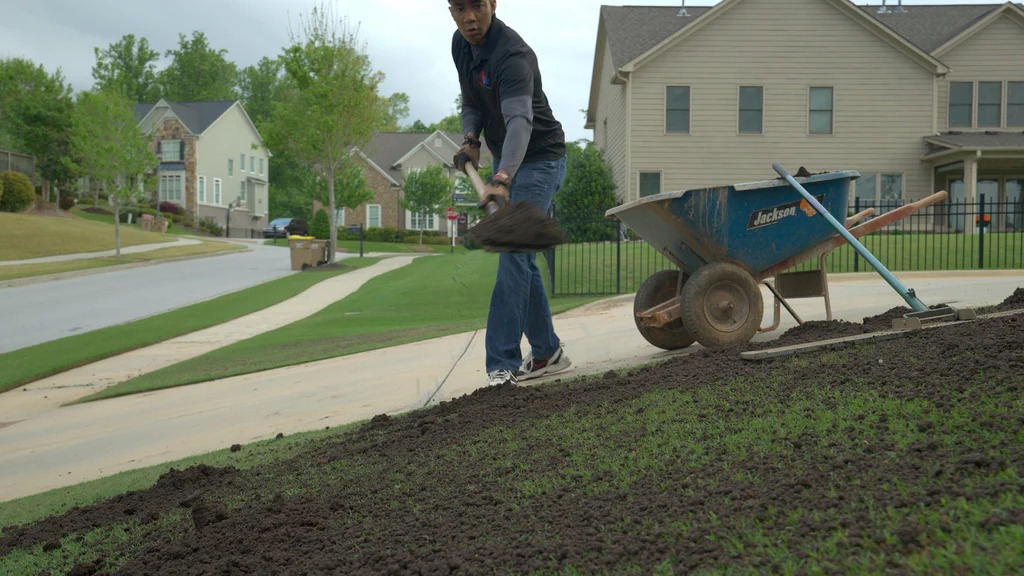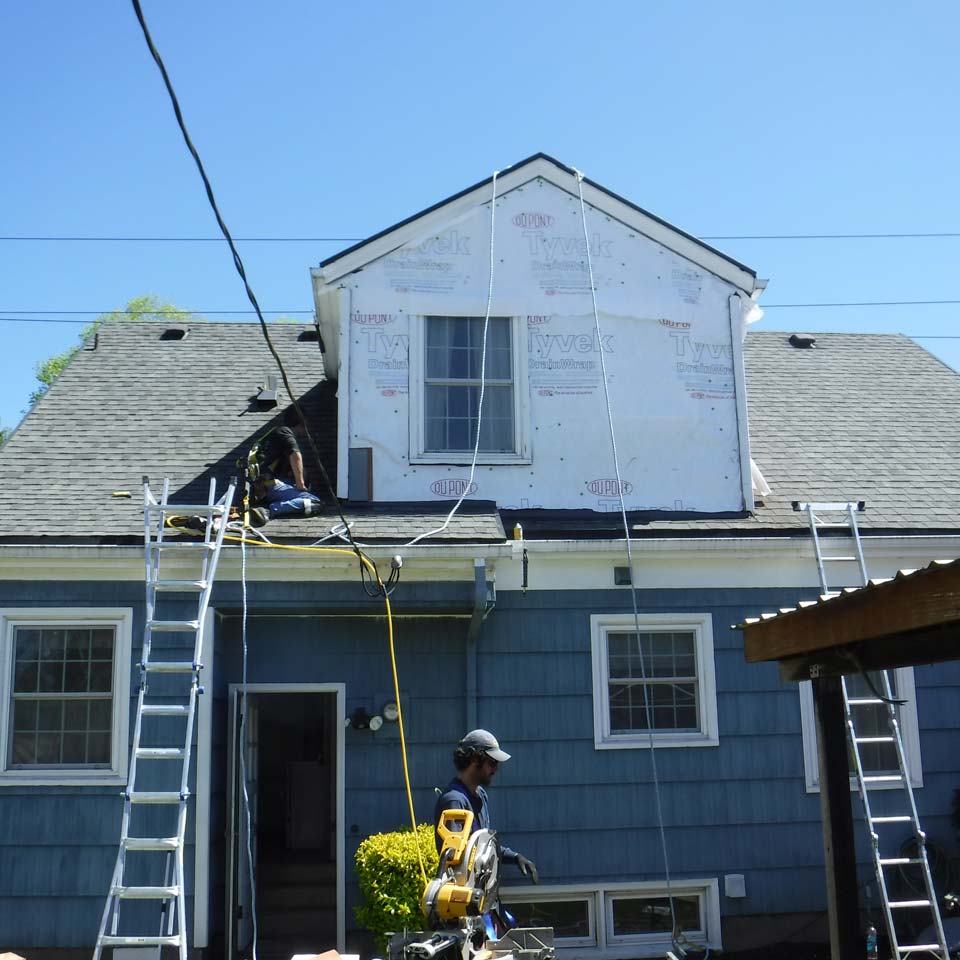A lush, green lawn doesn’t happen by accident. Behind every vibrant landscape is a series of smart maintenance steps, and one of the most overlooked yet powerful of these is Dethatching. Homeowners often focus on watering, mowing, and fertilizing—but forget that dethatching plays a crucial role in maintaining lawn health. If you want to transform your patchy, dull yard into a dense carpet of green, understanding the benefits of dethatching is essential. In this article, Emeraldscape Solutions explores the top five reasons dethatching can dramatically improve the look and life of your lawn.
What Is Dethatching?
Before diving into its benefits, it’s important to understand what dethatching actually means. Dethatching is the process of removing the layer of dead grass, roots, and debris (known as thatch) that builds up between the soil and the green grass blades. While a thin layer of thatch can be beneficial, too much of it blocks water, nutrients, and air from reaching the roots. This barrier stifles grass growth, encourages pests, and can eventually kill off your lawn. That’s where dethatching comes in—restoring the balance and giving your grass a chance to thrive.
1. Enhances Nutrient Absorption
One of the biggest advantages of dethatching is improved nutrient absorption. When thatch becomes too thick, it acts like a sponge, trapping fertilizers and keeping them from penetrating the soil. This means the grass roots are essentially starved of the food they need.
After dethatching, nutrients from fertilizers can pass through the soil more easily, directly reaching the grass roots. The result is stronger, more resilient grass that can grow evenly across your entire yard. With regular dethatching, your lawn maintenance efforts such as fertilizing will become significantly more effective.
2. Promotes Healthy Root Growth
Grass roots need three basic things to grow—air, water, and nutrients. When a thick thatch layer blocks these essentials, roots become shallow and weak. This makes your lawn more susceptible to heat stress, drought, and disease.
Dethatching breaks through this barrier, allowing roots to expand deeper into the soil. This not only helps the grass access more moisture during dry spells but also increases its stability. A lawn with deep, healthy roots is better equipped to survive extreme weather conditions and recover from damage quickly.
3. Improves Lawn Drainage
A common problem in lawns with heavy thatch buildup is poor drainage. Excess water can collect on the surface, leading to puddling, fungal growth, and even root rot. These issues are not just cosmetic—they can destroy your lawn from the inside out.
Dethatching removes the dense, water-repellent layer of debris that causes these drainage issues. Once the layer is gone, rainwater and irrigation soak evenly into the soil, reducing runoff and allowing the grass to absorb what it needs. Improved drainage also limits the growth of harmful fungi and weeds that thrive in overly moist environments.
4. Enhances Lawn Appearance
If your lawn looks dull, patchy, or brown in some areas, the problem may lie beneath the surface. Thick thatch can prevent new grass blades from emerging, leading to a sparse or uneven lawn. Dethatching rejuvenates your turf by removing barriers to growth.
Once dethatched, your lawn will appear greener, fuller, and more uniform. The improved airflow and sunlight penetration encourage new growth, making the entire area look fresher and more vibrant. Within a few weeks of dethatching, you’ll notice your lawn responding with richer color and denser grass coverage.
5. Prepares the Lawn for Overseeding and Fertilizing
For homeowners planning to overseed their lawns, dethatching is a must. Overseeding involves spreading new grass seed over your existing lawn to fill in bare spots or improve turf density. However, if the seeds can’t reach the soil due to a thick thatch layer, they won’t germinate properly.
Dethatching clears the way for seed-to-soil contact, increasing the chances of successful germination. Likewise, when you follow up dethatching with fertilization, the nutrients are absorbed quickly and efficiently. This combination can give your lawn a complete makeover in just one season.
When to Dethatch Your Lawn
Timing is key. The best time to dethatch depends on the type of grass you have:
- Cool-season grasses like fescue and bluegrass benefit from dethatching in early spring or early fall.
- Warm-season grasses such as Bermuda or zoysia are best dethatched in late spring through early summer.
Dethatching too frequently can damage healthy turf, so this task should typically be performed once a year or as needed based on the thickness of your thatch layer.
How to Dethatch Your Lawn
There are several methods available depending on the size of your lawn and your equipment:
- Manual dethatching rakes are ideal for small areas. They have sharp blades that pull up thatch as you rake.
- Power dethatchers or vertical mowers are suitable for larger lawns. These machines use rotating blades to cut through thatch and pull it up.
- Professional dethatching services like those offered by Emeraldscape Solutions provide a thorough, hassle-free approach to lawn care. Our team uses commercial-grade equipment to ensure your lawn receives the best possible treatment.
Why Choose Emeraldscape Solutions for Dethatching?
At Emeraldscape Solutions, we specialize in transforming lawns with precision care and expert services. Our dethatching solutions are customized to your lawn’s specific needs, whether it requires light dethatching or a more aggressive approach. We ensure every inch of your lawn is treated with care, leaving you with a healthier, greener, and more vibrant yard.
With years of experience in lawn maintenance, we know how to identify problem areas and restore your turf to its full potential. Our dethatching services are efficient, affordable, and designed to deliver long-term results.
Frequently Asked Questions
1. How do I know if my lawn needs dethatching?
If your lawn feels spongy underfoot or water sits on the surface after rainfall, it’s a sign of excessive thatch. You can also use a spade to remove a small wedge of turf and measure the thatch layer. Anything over half an inch may require dethatching.
2. Will dethatching damage my lawn?
Dethatching can temporarily stress your lawn, especially if done too aggressively or during the wrong season. However, when done properly, it revitalizes the turf and promotes long-term health. Emeraldscape Solutions ensures dethatching is performed at the optimal time for minimal stress and maximum benefit.
3. How often should I dethatch my lawn?
Most lawns only need dethatching once every 1 to 3 years. However, frequency depends on factors such as grass type, soil condition, and maintenance habits. Regular inspections can help determine when dethatching is necessary.
Conclusion
Dethatching is one of the most effective and transformative steps you can take to enhance your lawn’s health and appearance. From improved nutrient uptake and drainage to healthier root systems and vibrant turf, the benefits are undeniable. Whether you’re a homeowner seeking a greener yard or preparing for seasonal lawn treatments, dethatching is a foundational process that delivers lasting value.
At Emeraldscape Solutions, we take pride in helping clients achieve beautiful, thriving lawns. Contact us today to schedule a professional dethatching service and see the difference a healthy foundation can make for your outdoor space.
Explore our homepage now to stay ahead in the digital world.











Leave a Reply